11 Best Native Plants for Your Tennessee Yard
BY JUDITH GALLOVA | MAY 15TH, 2023 | LAWN CARE, TENNESSEETennessee is home to unconquered natural beauty, from the Great Smoky Mountains to the Mississippi River. Against this stunning backdrop, it would be a shame to have a bare, dull yard when you could incorporate some of that natural beauty into your own outdoor space with these 11 great native plants of Tennessee.
In this article:
- Why Use Native Plants
- The Different Climates of Tennessee
- 11 Native Plants for Your Tennessee Yard
- How to Choose the Best Natives for Your Tennessee Landscape
Why Use Native Plants
Native plants grow naturally in Tennessee, so they have a number of advantages over non-natives, such as:
- They’re easier to maintain.
- They provide food and habitat for local wildlife.
- They need fewer chemical treatments to thrive.
Breaking Down Tennessee’s Climates
Tennessee is a diverse state consisting of different regions that vary in climate, hardiness zone, and elevation. Your area may impact your choice of plants. The different regions include:
- Western Tennessee: The climatically warmest part of the state is here; however, the region is also most susceptible to severe weather and remnants of tropical storms and hurricanes
- Middle Tennessee and Cumberland Plateau: Variable climate; Cumberland Plateau receives the most snow and rain; it’s also most likely to receive snow even when it’s raining in the rest of the state
- Eastern Tennessee: The “rain shadow” effect is in this region, meaning that it’s partially dry; it has both the lowest and the highest rainfall records; the region is also cooler due to a higher elevation
11 Native Plants for Your Tennessee Yard
1. Spicebush (Lindera Benzoin)
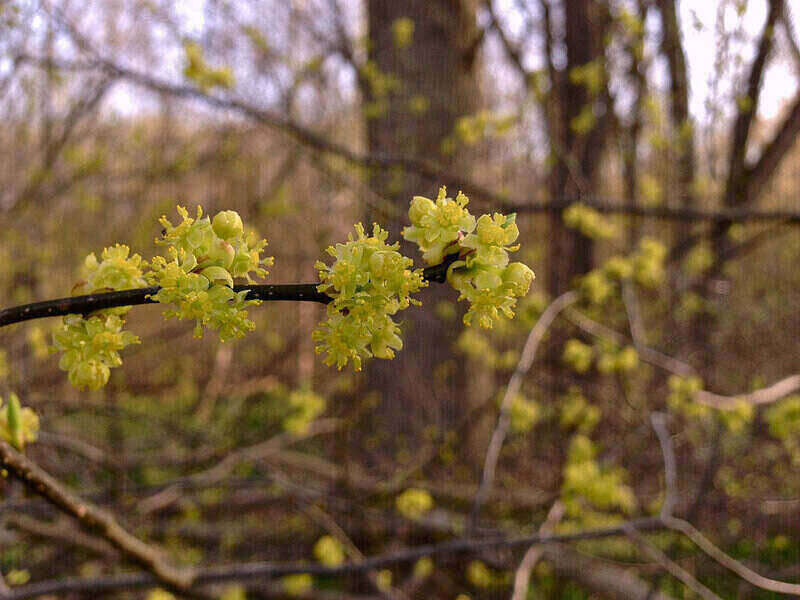
Photo Credit: Fritzflohrreynolds / Wikimedia Commons / CC BY-SA 3.0
Spicebush peaks in the fall when it produces yellow leaves and bright red berries that attract a variety of birds. If you find yourself missing flowers late in the year, don’t worry. In late winter, spicebush flowers with small yellow blooms.
Although spicebush naturally lives in wet and shady areas, it’s often planted in full sun, where it grows denser. If you’re getting multiple spicebush plants, you’ll need both male and female plants to produce berries.
There aren’t any known toxic effects of the spicebush, but it’s always better to practice caution anyway.
Plant type: Shrub
Sun: Full sun, partial shade
Water needs: Moderately moist
Soil: Prefers fertile, loamy soil but tolerates sandy loam as well
Duration: Perennial
Mature height: 6 to 12 feet
Potential hazards: None known, but practice caution in any case
2. Wild Azalea (Rhodefondron Canescens)
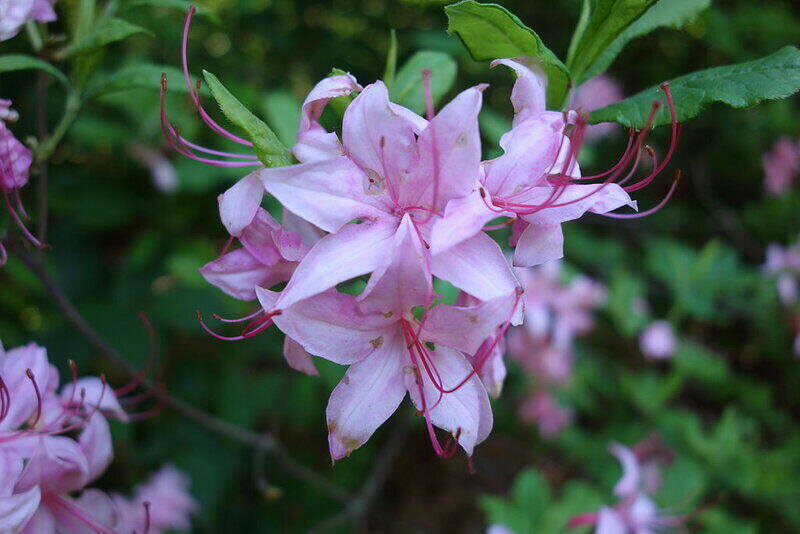
Photo Credit: Daderot / Wikimedia Commons / CC0
Wild azalea grows visually appealing white and pink flowers that bloom from March to April and complement a variety of landscapes. If you decide to plant it, don’t fertilize it and don’t let its leaves get wet. Provide it with well-drained soil to avoid potential problems, and be sure to lay mulch to maintain the plant’s moisture.
Note that the wild azalea may scorch in full sun and that it’s susceptible to diseases and insect pests, so be sure to take care of it if you want to keep it looking pretty. However, the plant doesn’t only look great; it also benefits local ecosystems by serving as food for pollinators like bees and butterflies.
Yet, take note: the plant is severely toxic, and its ingestion can be fatal. You should never eat it or feed it to animals.
Plant type: Shrub
Sun: Full sun, partial shade
Water needs: Moderate moisture
Soil: Prefers soil with a high organic matter content but tolerates sandy and loam soils; the soil must be acidic
Duration: Perennial
Mature height: 6 to 8 feet
Potential hazards: Toxic
3. Large Tickseed (Coreopsis Major)
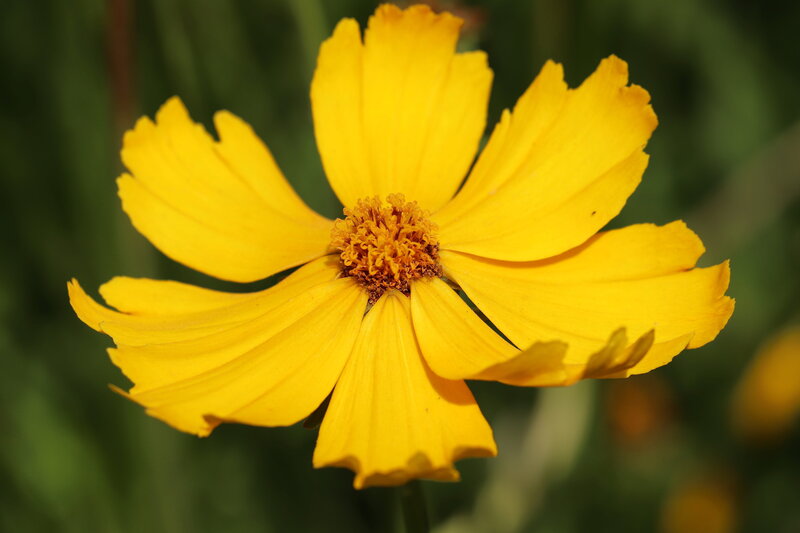
Photo Credit: PxFuel
Large tickseed has bright yellow, showy flowers that will bring vibrancy to your yard year after year. The plant is native to Middle and East Tennessee, so if you’re from either of these regions, it may be a great addition to your garden.
Large tickseed spreads easily, isn’t invasive, and attracts pollinators. It also feeds birds, who like to snack on its seeds, which look like ticks (hence the plant’s name).
The Coreopsis species are listed as non-toxic on the ASPCA website, but there are some reports of toxicity in some Coreopsis varieties. Also note that the plant is susceptible to diseases to some extent.
Plant type: Flower
Sun: Full sun, partial shade
Water needs: Dry or moderately dry
Soil: Will tolerate most soils, but sandy or rocky preferred
Duration: Perennial
Mature height: 2 to 3 feet
Potential hazards: No data reporting toxicity for this variety, but practice caution in any case
4. Cardinal Flower (Lobelia Cardinalis)
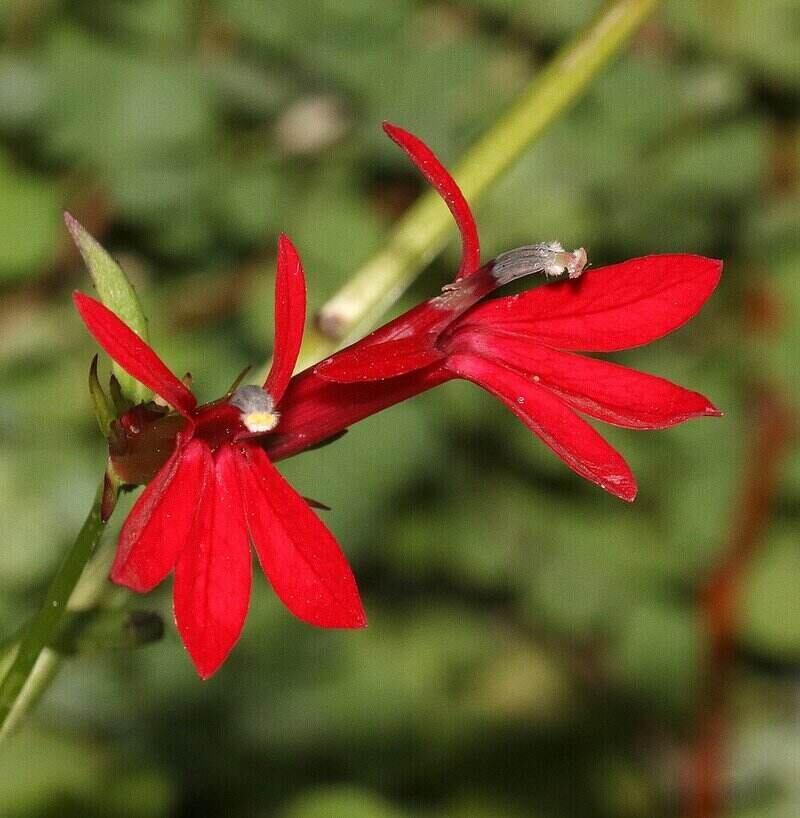
Photo by: ALAN SCHMIERER / Wikimedia Commons / CC0
Cardinal flower’s vibrant, red flowers will make your garden a real showstopper when they bloom in the summer. Because the plant thrives in wet conditions, you’ll want to mulch to retain moisture in the soil. It’s an ideal plant for rain gardens, too. The cardinal flower also provides food for pollinators like butterflies.
However, take note: this plant is severely toxic, and ingesting it can be fatal. You should never ingest it or feed it to animals.
Plant type: Wildflower
Sun: Partial shade
Water needs: Needs to stay moist at all times
Soil: Prefers moderately wet to wet soil that is rich and mildly acidic; likes to live next to streams or in moist meadows or woodland habitats
Duration: Perennial; divide every three years to perpetuate this flower
Mature height: 2 to 4 feet
Potential hazards: Toxic
5. Wild Blue Phlox (Phlox Divarcicata)
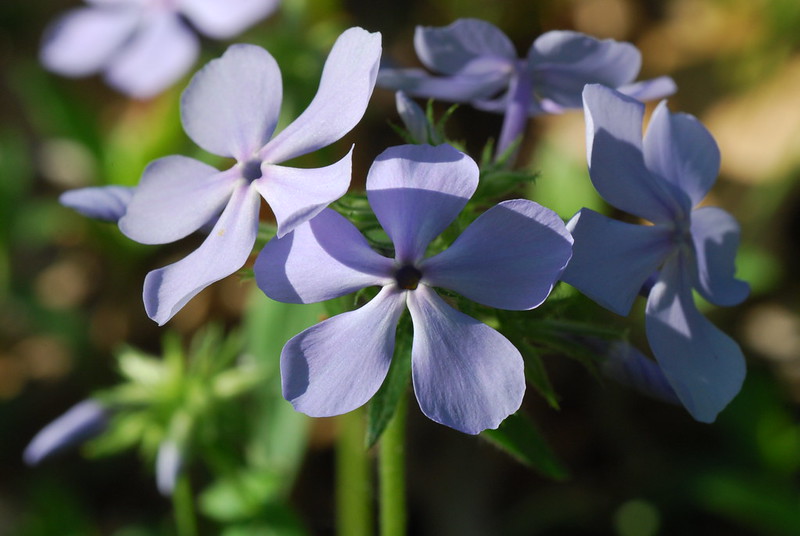
Photo Credit: Joshua Mayer / Flickr / CC BY-SA 2.0
Wild blue phlox, also known as woodland phlox and wild sweet William, produces delicate flowers that range between white, pink, and blue in color. It forms strong colonies over time that are sure to complement any Tennessee yard.
Furthermore, wild blue phlox provides a natural habitat for various species and enhances local biodiversity. You may need to protect your phlox plants from rabbits by elevating them or installing a net.
Phlox plants usually aren’t toxic, but it’s best to always practice caution anyway. Also, don’t confuse the wild sweet William with sweet William (Dianthus barbatus) or another toxic species that may look similar or have a similar name.
Plant type: Flower
Sun: Partial shade, full shade
Water needs: Tolerates medium-dry to medium-wet soils
Soil: Widely adapted, but prefers soil with lots of organic matter
Duration: Perennial
Mature height: Up to 1.5 feet
Potential hazards: None known, but practice caution in any case
6. American Beautyberry (Callicarpa Americana)
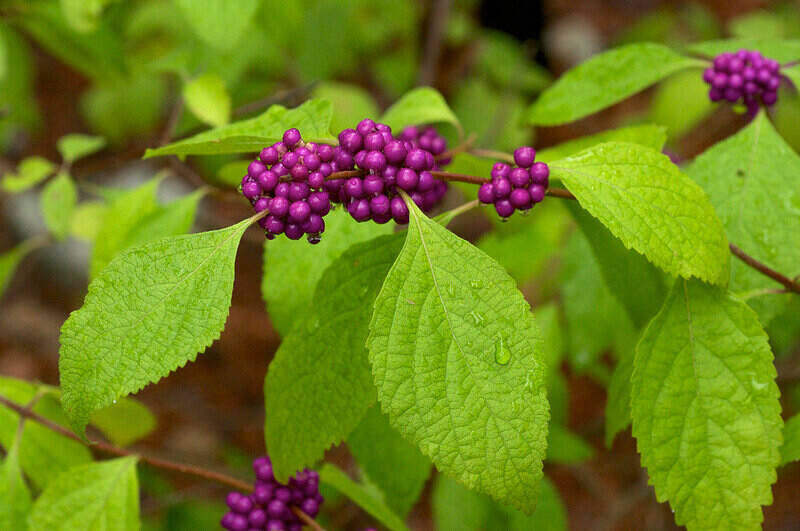
Photo Credit: Eric Hunt / Wikimedia Commons / CC BY-SA 3.0
American beautyberry is a shrub mainly found in Eastern Tennessee, although it sometimes appears in Western Tennessee, too. It especially lives up to its name in the fall, when it produces clusters of bright, purple berries. It doesn’t typically have any major pest problems, and it tolerates drought to some extent, too. To control your American beautyberry’s size and keep it looking beautiful, you can prune it in the spring before new flowers begin to grow.
Beautyberries serve as a great source of food for various wildlife. Some sources report it as non-poisonous to humans as well. Others, however, claim that it may have mild toxic effects. You can speak to a professional about any dietary changes. There’s a lack of data regarding the plant’s toxicity to domestic animals, so avoid letting them eat it.
Plant type: Shrub
Sun: Full sun
Water needs: Low
Soil: Clay, loamy, sandy, moist, well-draining, rich in organic matter; tolerant of various soil types as long as it gets good drainage
Duration: Perennial
Mature height: 3 to 8 feet
Potential hazards: Mild toxic effects reported; a lack of data regarding toxicity to pets
7. Flowering Dogwood (Cornus Florida)
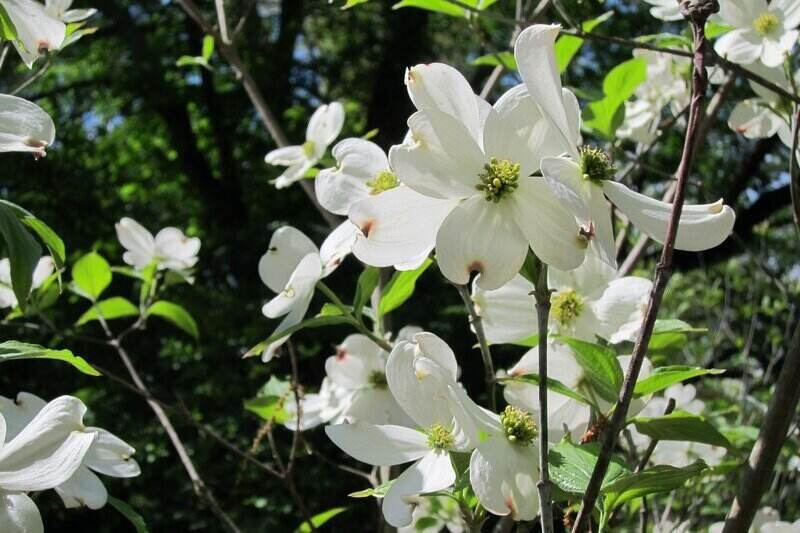
Photo Credit: Hippopx
Flowering dogwood is a small tree that produces delicate flowers in the spring and red berries in the fall. If you want to provide food or habitat for local animals, this plant is a great choice. The tree is enjoyed by various wildlife, like pollinators and birds, and bees and butterflies even use the flowering dogwood to lay eggs.
Despite the appearance and name of the flowering dogwood berries, be warned: they’re very poisonous, so neither humans nor pets should ever eat them, or any part of the tree. Instead, allow wildlife that won’t harm itself to snack on it.
Plant type: Small tree
Sun: Full sun, partial shade; prefers partial shade
Water needs: Can handle occasional dryness; prefers moist, acidic, well-drained soil
Soil: Prefers high organic matter content; will tolerate sand, loam, and clay mixes
Duration: Perennial
Mature height: 12 to 30 feet
Potential hazards: Toxic
8. Tulip Poplar (Liriodendron Tulipifera)
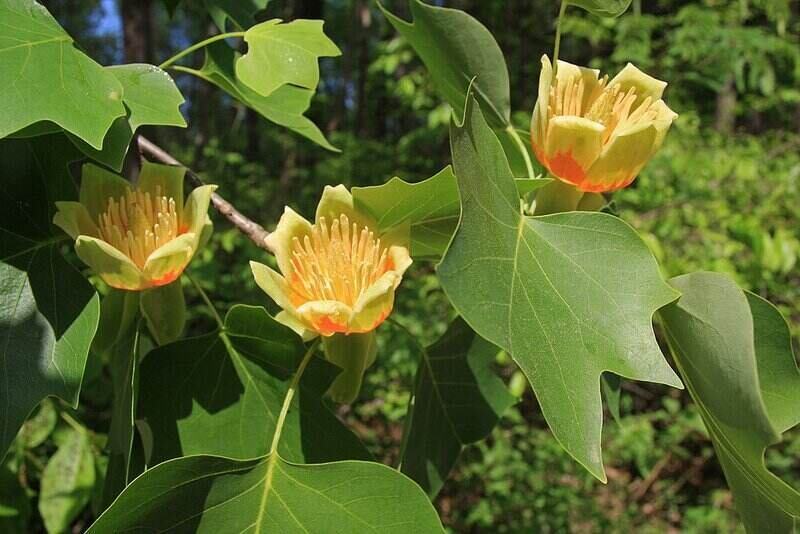
Photo Credit: Dcrjsr / Wikimedia Commons / CC BY 3.0
The tulip poplar is the state tree of Tennessee. It adds beauty to any landscape with its tulip-shaped flowers. If you like a little color variety in your yard, you’ll appreciate that these unique blossoms are green and orange in the summer and turn bright yellow in the fall. Birds and pollinators like to snack on the tulip poplar, too.
Don’t let the tulip poplar’s size intimidate you; although it can reach a height of 120 feet, there are smaller cultivars, like Little Volunteer, that are easier to maintain in backyards.
While ASPCA lists this tree as non-toxic to some domestic animals, take note that some sources report that this tree is toxic to both people and pets. It’s always better to be cautious.
Plant type: Large tree
Sun: Full sun
Water needs: Moist or occasionally dry in well-drained soil
Soil: Slightly acidic loam
Duration: Perennial
Mature height: 70 to 120-plus feet
Potential hazards: Some reports of toxicity
9. Black-Eyed Susan (Rudbeckia Hirta)
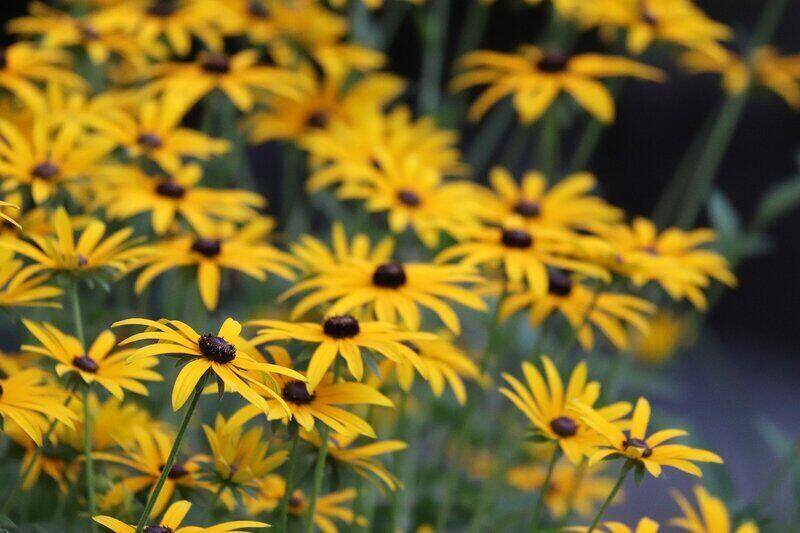
Photo Credit: Pixabay
Black-eyed Susan adds a yellow pop of color that is not only attractive to humans but also to pollinators such as butterflies. Although it takes around a year to see the first blossoms, once they appear, they’ll accompany your yard for months.
Black-eyed Susan is mainly present in Middle and Eastern Tennessee but can also be found in Western Tennessee. It’s easy to care for and tolerates various conditions, including heat, drought, and cold.
However, black-eyed Susan is also toxic to animals, so be sure to keep them away. Although the data regarding its toxicity is limited, we know it can also cause allergic reactions and asthma in humans. Don’t consume or touch it, and use protective gloves while handling it.
Plant type: Wildflower
Sun: Full sun to partial shade
Water needs: Moderate
Soil: Average, well-draining, acidic
Duration: Perennial
Mature height: 2 to 3 feet
Potential hazards: Toxic
10. Little Bluestem (Schizachyrium Scoparium)
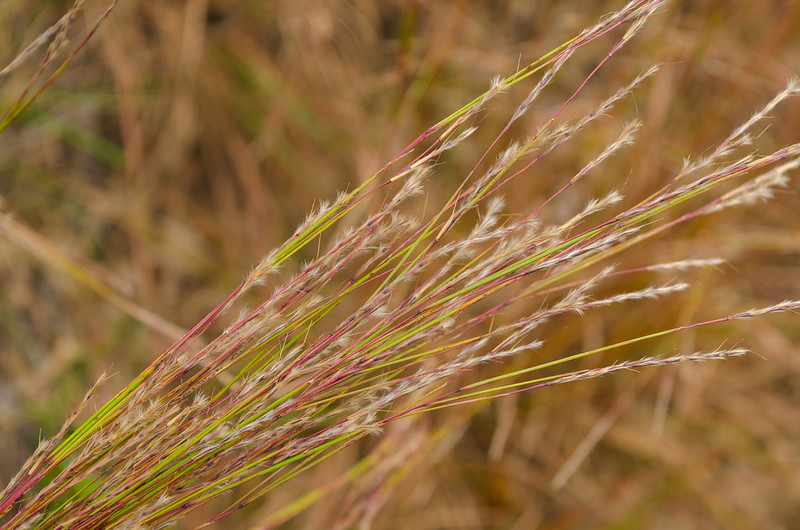
Photo Credit: Joshua Mayer / Flickr / CC BY-SA 2.0
If you want your yard to pop even more, you might want to add some ornamental grass, like little bluestem. This grass is bluish in the summer and orange-red in the fall, adding the extra touch of vibrancy you may be looking for.
Moreover, little bluestem is a great food source for birds and is also beneficial to butterflies that lay eggs in it. The grass thrives in hot, humid conditions and grows well on hillsides. Once established, it tolerates drought and needs little maintenance. To keep it looking beautiful, cut it back in late winter or early spring.
Little bluestem doesn’t have known toxic effects, but it’s always better to err on the side of caution anyway.
Plant type: Ornamental grass
Sun: Full sun
Water needs: Occasionally; dry to moist
Soil: Any type (clay, loam, sand, rocky) but must be well-drained
Duration: Perennial
Mature height: 2 to 4 feet
Potential hazards: None known, but practice caution in any case
11. Common Yarrow (Achillea Millefolium)
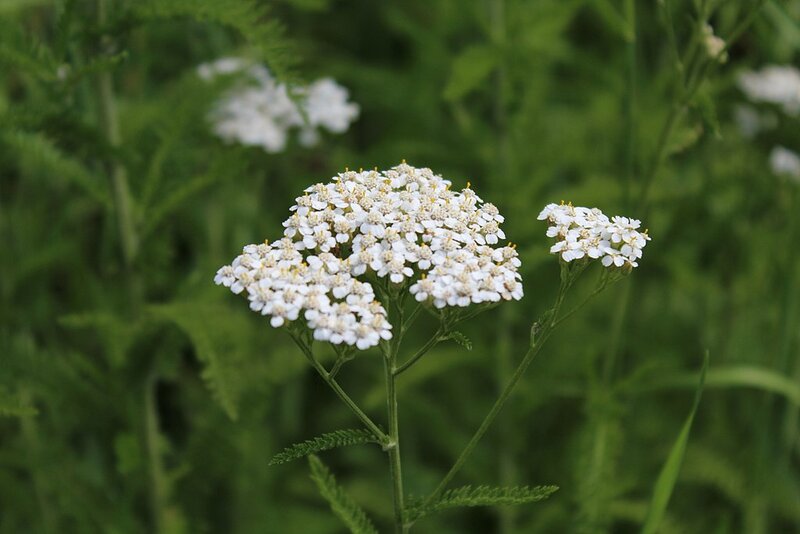
Photo Credit: Jitaeri / Wikimedia Commons / CC BY-SA 4.0
You’ve probably seen the fragrant common yarrow during a stroll in the park, but why not make this easy-care plant a part of your yard? You can get a pink, white, or yellow variant, depending on which one’s the best fit for your outdoor space. No matter which color variant you pick, your common yarrow will attract pollinators and birds, providing them with nectar and seeds to snack on. Starlings even like to use common yarrow to build their nests.
If you want to encourage more blooms on your common yarrow, be sure to cut off its dead flowers. Even though the plant is tolerant of various conditions, you may need to treat its common problems, such as mildew and root rot. It can also become weedy in poorly managed areas.
Take note, that common yarrow is toxic and should never be ingested by you or your pets. Touching the plant may cause irritation.
Plant type: Flower
Sun: Full sun, partial shade, full shade
Water needs: Once established, usually survives on natural rainfall; water no more than once a month in summer
Soil: Tolerates most soil types
Duration: Perennial
Mature height: 1 to 3 feet tall
Potential hazards: Toxic
How to Choose the Best Natives
As you can see, there’s a broad selection of native plants that can thrive in your Tennessee landscape. When- picking the ones that are right for your yard, consider factors such as:
- Your soil
- How much sunlight your yard gets
- How much you’re willing to care for the plant
- Which Tennessee region you’re from (see above)
- The plant’s potential hazards (even if there are none known, that doesn’t mean the plant is free of hazards)
Of course, if you want a beautiful yard, there’s more to it than planting flowers, shrubs, or trees. You also need to maintain your yard regularly by mowing the lawn, trimming the hedges, removing weeds, and watering.
Need a hand? Don’t hesitate to contact one of WikiLawn’s lawn care pros.
Main Photo by: Joshua Mayer / Flickr / CC BY-SA 2.0